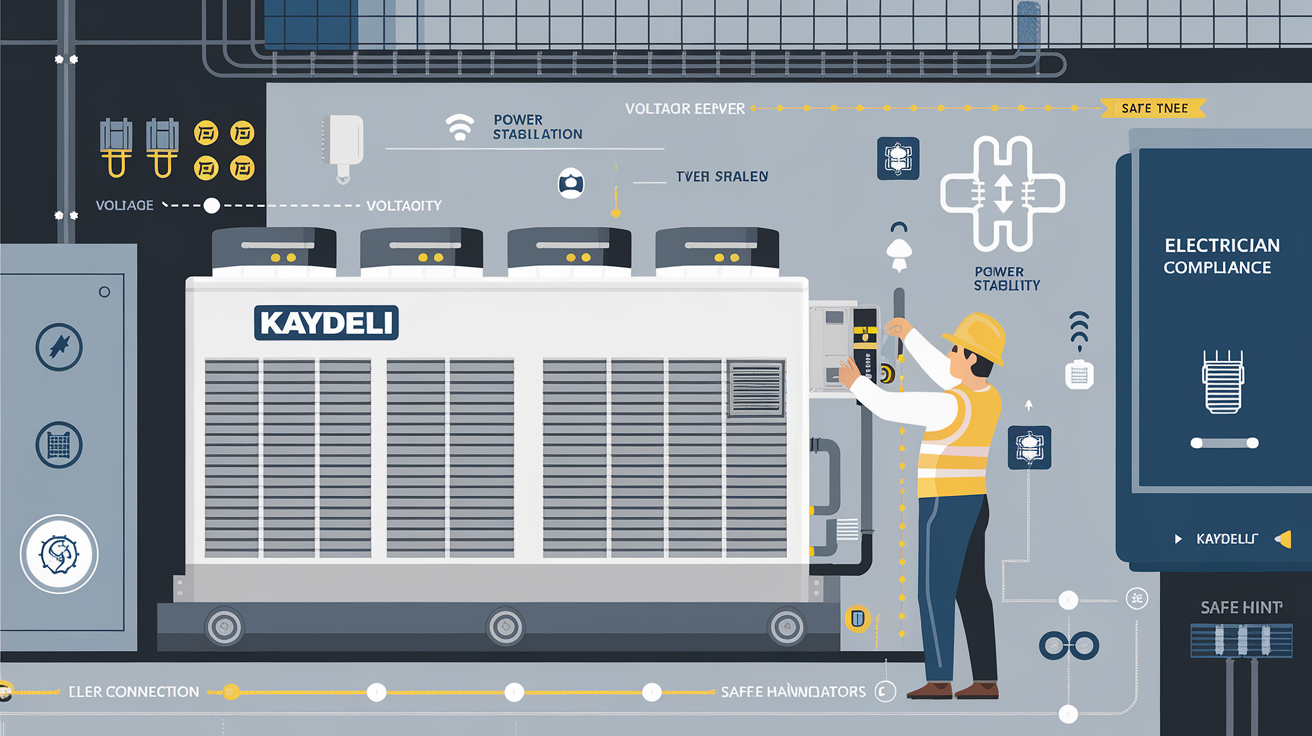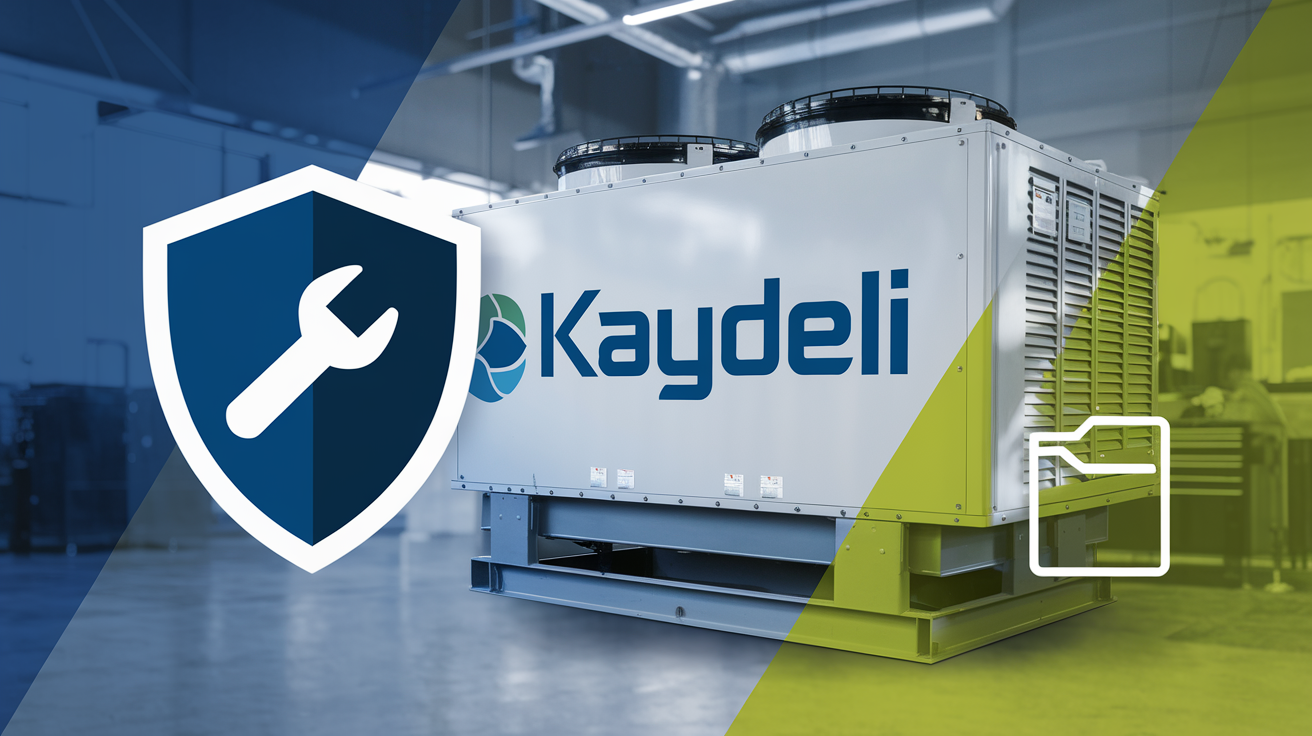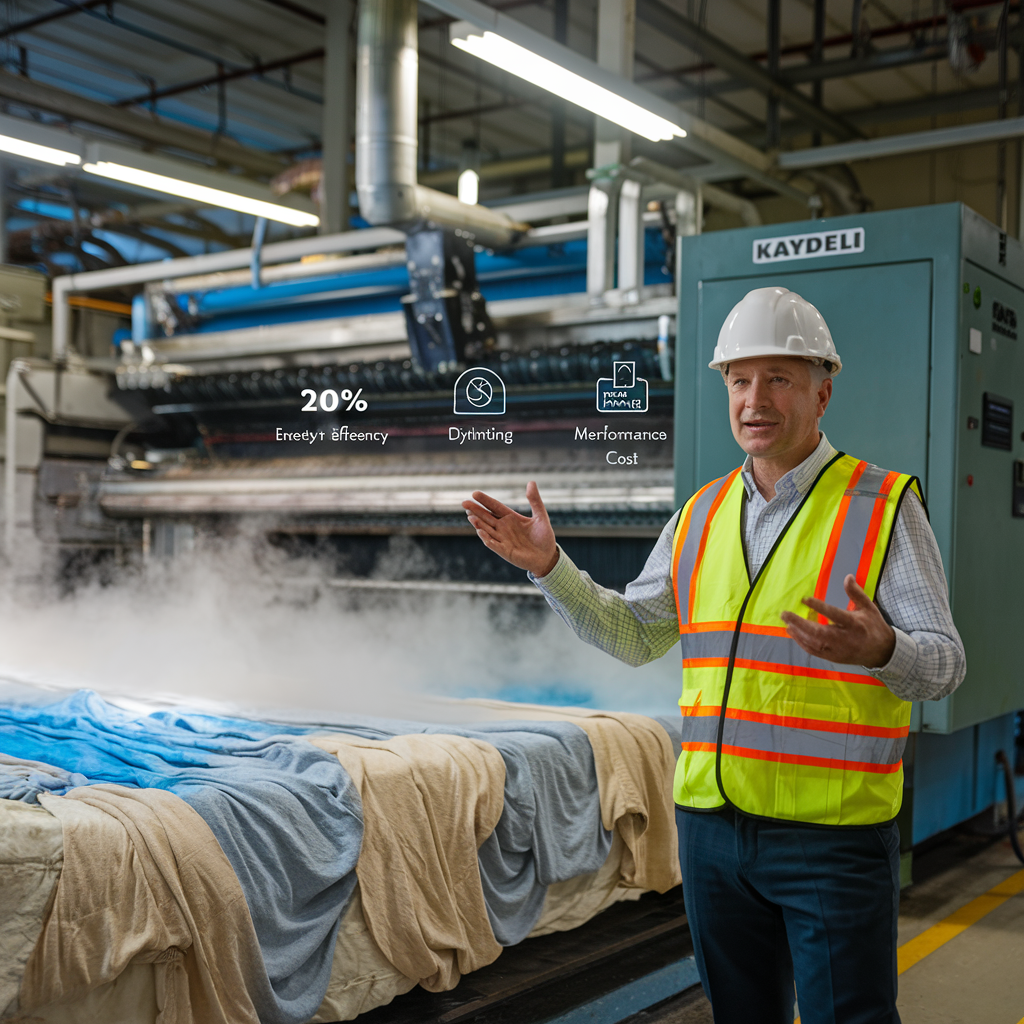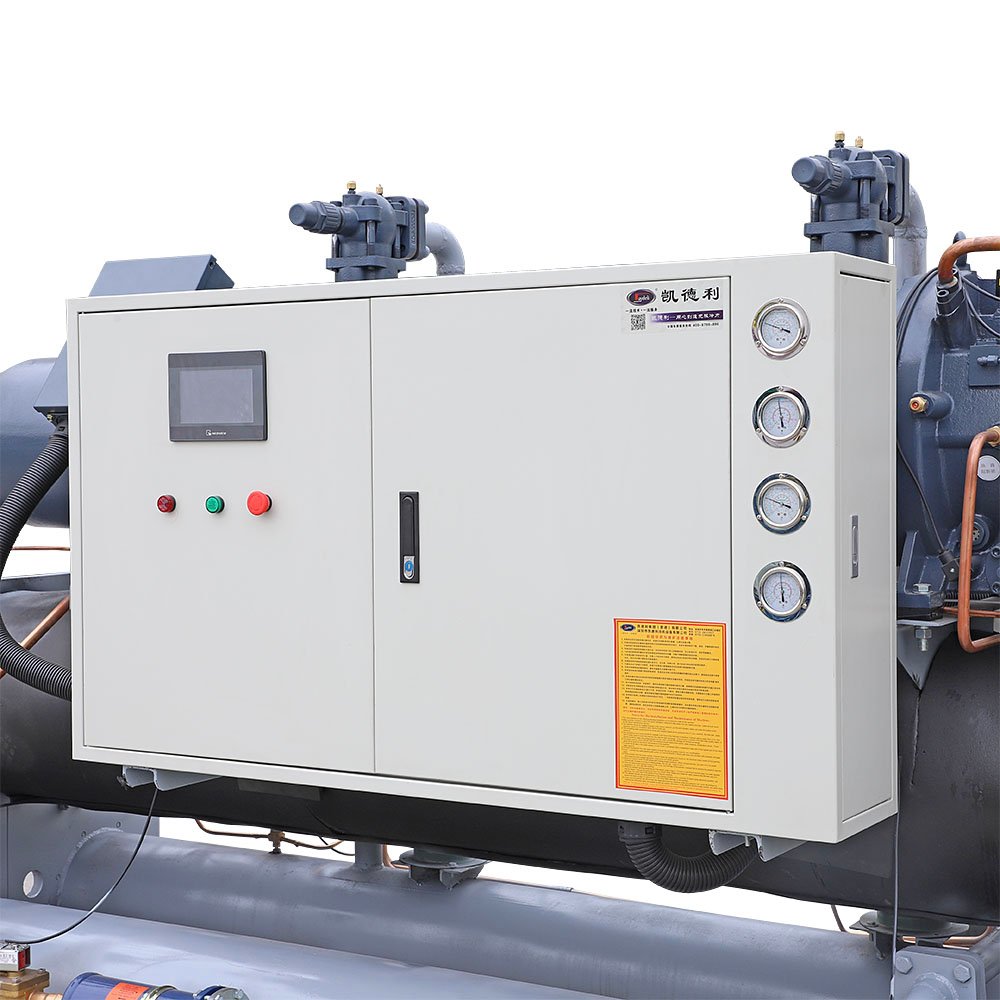- Kaydeli
- Water Heat Source Steam Heat Pumps
Water Heat Source Steam Heat Pumps
Catalog:Heat Pumps Chillers



Determine the right cooling capacity for your setup by estimating kilowatt requirements per hour. 🤓
|
Cooling Capacity: --
|
|
Simplified Working Principle of Heat Pumps
Heat pumps operate by absorbing heat from the air, compressing it to increase energy, releasing the heat for use, and recycling the refrigerant for continuous heating or cooling.
Heat Absorption
Compression
Heat Release
Expansion
What Are Water Heat Source Steam Heat Pumps?
Water Heat Source Steam Heat Pumps are advanced systems that use water as a renewable thermal energy source to generate steam for industrial and commercial applications. These pumps extract heat from water sources such as rivers, lakes, groundwater, or industrial waste heat and efficiently convert it into high-grade steam.
| Feature | Description |
|---|---|
| Sustainable Energy Solution | Utilizes water as a renewable and consistent energy source, reducing reliance on fossil fuels. |
| High-Efficiency Steam Generation | Produces steam with minimal energy input, significantly improving operational efficiency compared to traditional boilers. |
| Eco-Friendly Operation | Emits lower greenhouse gases by leveraging renewable energy sources and reducing overall energy consumption. |
| Versatile Applications | Suitable for industries requiring precise and consistent steam production, including food processing, pharmaceuticals, textiles, and chemical manufacturing. |
| Wide Temperature Range | Capable of generating steam at temperatures up to 120°C or higher, depending on the application. |
| Aspect | Traditional Steam Systems | Water Heat Source Steam Heat Pumps |
|---|---|---|
| Energy Source |
– Relies on fossil fuels like coal, oil, or natural gas. – Non-renewable, contributing to resource depletion and environmental degradation. |
– Utilizes renewable heat from water sources such as rivers, lakes, or industrial waste heat. – Reduces dependency on fossil fuels, making it more sustainable. |
| Efficiency |
– Lower overall efficiency due to energy loss during combustion and heat transfer. – Fixed output leads to energy waste during periods of reduced demand. |
– Significantly higher efficiency, often exceeding 300%. – Variable-speed compressors adjust output to match demand, minimizing energy waste. – Lower operational costs due to reduced energy consumption. |
| Environmental Impact |
– High greenhouse gas emissions (CO2, NOx, and SOx). – Contributes to global warming and air pollution. – Increased regulatory pressures and compliance costs. |
– Little to no direct emissions by using renewable heat sources. – Incorporates low-GWP refrigerants for an eco-friendly footprint. – Compliant with global sustainability regulations. |
| Additional Advantages |
– Higher maintenance needs due to combustion processes. – Less adaptable to diverse temperature requirements. |
– Reduced maintenance costs due to fewer moving parts. – Flexible and customizable for various temperature needs. – Future-proof technology aligning with energy transition goals. |
Comparison of Water Heat Source Steam Heat Pumps and Other Heat Pumps
This table compares Water Heat Source Steam Heat Pumps with other heat pump types, including Air and Ground Source Heat Pumps. It highlights key differences in energy sources, efficiency, installation complexity, applications, environmental impact, and costs, providing a comprehensive overview to help users select the most suitable system for their needs.
| Feature | Water Heat Source Heat Pumps | Other Heat Pumps (Air & Ground Source) |
|---|---|---|
| Energy Source |
- Extracts heat from water sources (rivers, lakes, groundwater, or industrial waste heat). - Provides stable thermal energy regardless of outdoor air temperature. |
- Air Source: Extracts heat from ambient air, performance decreases in extreme cold. - Ground Source: Extracts heat from underground, requires extensive drilling. |
| Efficiency |
- Highly efficient due to stable water temperatures. - Less affected by seasonal or weather variations. |
- Air Source: Efficiency drops in cold climates. - Ground Source: High efficiency but requires higher installation costs. |
| Installation Complexity |
- Requires access to water sources. - Installation complexity depends on water proximity and permits. |
- Air Source: Simple installation, suitable for urban areas. - Ground Source: Requires significant excavation or drilling, increasing costs. |
| Applications |
- Ideal for industries needing consistent steam or heating (e.g., food processing, pharmaceuticals, textiles). - Suitable for district heating and industrial processes. |
- Air Source: Ideal for residential and commercial HVAC systems. - Ground Source: Best for long-term installations with available land space. |
| Environmental Impact |
- Eco-friendly by using renewable water-based thermal energy. - Reduced greenhouse gas emissions and energy consumption. |
- Air Source: Lower emissions but efficiency varies with climate. - Ground Source: Low emissions but requires more resources for installation. |
| Cost |
- Moderate installation costs, depending on water accessibility. - Lower operational costs due to higher efficiency. |
- Air Source: Lower initial cost, higher operational cost in extreme climates. - Ground Source: High upfront cost with long-term savings. |
Resources
Heating Requirements
Heating Capacity Needs
Understanding your specific heating requirements is essential to ensure optimal performance and efficiency when using a Water Heat Source Steam Heat Pump. Here’s a breakdown of how to determine your needs and choose the right system:
| Requirement | Details |
|---|---|
| 🔥 Heat Demand |
- Identify process-specific heat needs (e.g., sterilization, drying). - Calculate heating load in kW or BTU based on facility size. - Examples: Food processing or chemical reactions requiring consistent heat. |
| 🌡️ Temperature Requirements |
- Define required steam temperatures (e.g., 80°C–120°C or higher). - Low temperatures suit district heating; high temperatures benefit industrial processes. |
| 🌊 Operational Environment |
- Ensure a reliable water source (e.g., rivers, lakes, industrial waste heat). - Consider water temperature stability for consistent heat extraction. - Suitable for regions with limited seasonal variations. |
| ⚡ Energy Efficiency Goals |
- Look for a system with a high Coefficient of Performance (COP). - Prioritize systems with low-GWP refrigerants to reduce carbon footprint. - Balance cost savings with environmental objectives. |
| 📏 System Sizing |
- Choose a model with a capacity slightly exceeding the calculated heating load. - Opt for modular systems to accommodate future expansion or variable demand. - Example: Textile factories with fluctuating production cycles. |
| 🏭 Industry Examples |
- **Textile Industry**: Steam at 80°C–100°C for dyeing and finishing. - **District Heating**: Low-pressure steam for urban heating systems. - **Chemical Industry**: High-temperature steam >100°C for distillation and reactions. |
Where Water Heat Source Heat Pumps Excel
Water Heat Source Heat Pumps excel in a wide range of applications, offering superior efficiency, reliability, and eco-friendliness compared to traditional heating systems. Below are the key scenarios where these systems shine:
Industrial Processes
•Applications:
Steam-driven chemical reactions.
Distillation and drying processes in chemical, pharmaceutical, and food industries.
Pulp and paper production requiring consistent heating.
•Benefits:
Provides precise temperature control for sensitive industrial processes.
Reduces operational costs by utilizing renewable water-based heat sources.
District Heating Systems
•Applications: Centralized heating for residential, commercial, and industrial buildings in urban and suburban areas.Supplying hot water and heating to multiple facilities.
•Benefits:
Delivers cost-effective and environmentally friendly heating solutions.
Reduces dependency on fossil fuel-based heating systems.
Agricultural Applications
•Applications:
Heating greenhouses to maintain optimal growth conditions for plants.
Humidity control and heat management in livestock facilities.
•Benefits:
Promotes higher crop yields by maintaining stable temperatures.
Reduces heating costs for large-scale agricultural operations.
Renewable Energy Systems
•Applications:
Integration with solar panels or geothermal systems to enhance renewable energy usage.
Hybrid systems for industrial and commercial buildings seeking sustainable solutions.
•Benefits:
Maximizes energy efficiency by combining multiple renewable energy sources.
Supports environmental goals by reducing greenhouse gas emissions.
Temperature Requirements for Water Source Heat Pumps
Water Source Heat Pumps are highly adaptable to a range of temperature conditions due to their ability to extract thermal energy from water sources with stable temperatures. Below is an overview of their performance under various conditions and the requirements to consider:
| Aspect | Details |
|---|---|
| Optimal Temperature Range |
- Operates efficiently between 10°C and 25°C. - Groundwater maintains a stable range, ensuring year-round performance. |
| Cold Climate Performance |
- Works effectively even when water temperatures drop below 10°C. - Advanced systems maintain output with minimal efficiency loss. |
| High-Temperature Applications |
- Capable of generating steam up to 120°C or higher. - Ideal for processes requiring high-grade steam, such as food sterilization and chemical reactions. |
| Water Source Considerations |
- **Groundwater**: Consistent temperatures between 10°C–15°C. - **Surface Water**: Seasonal variations, ranging from 5°C–25°C. - **Industrial Waste Heat**: Stable and often above 30°C, improving efficiency. |
| Industry-Specific Temperature Needs |
Food and Beverage: 60°C–120°C for sterilization and pasteurization. Chemical Manufacturing: 80°C–120°C for distillation and reactions. Textile Industry: 70°C–100°C for dyeing and finishing. District Heating: 40°C–80°C for urban heating systems. |
Installation and Maintenance
Proper installation and regular maintenance are crucial for ensuring that Water Heat Source Heat Pumps operate efficiently and reliably. This section highlights the key steps for installation and best practices for ongoing maintenance.
Installation Guidelines

🏗️ Site Preparation
Identify a consistent and reliable water source such as groundwater, lakes, rivers, or industrial waste heat. Ensure the site allows easy access for installation, water piping, and electrical connections.

🔧 System Integration
Verify compatibility with existing heating systems, steam networks, or industrial processes. Professional installation is essential to correctly size the system and ensure proper heat extraction and flow.

🌊 Water Quality Considerations
Analyze the water source for impurities, as high sediment or mineral content may require filtration systems to protect components like heat exchangers.

🛠️ Initial Testing
After installation, could you test the heat pump system to ensure all components, such as compressors, pumps, and valves, operate correctly? Monitor initial heating performance, water flow rates, and steam output levels.
Maintenance Best Practices
Routine maintenance is key to preserving the efficiency and longevity of Screw Type Chillers. Here are essential maintenance steps:
| Maintenance Task | Details |
|---|---|
| 🧼 Regular Cleaning |
- Clean heat exchangers and filters to prevent scaling, clogging, or debris buildup that could impact efficiency. - Inspect and flush the water circuit periodically for smooth operation. |
| ⚙️ Component Inspections |
- Check compressors, refrigerant levels, and pumps regularly to identify wear and prevent unexpected breakdowns. - Inspect all pipes and valves for leaks or corrosion. |
| 🔍 System Monitoring |
- Use smart monitoring systems (if available) to track performance metrics such as steam output, energy consumption, and water temperature. - Set up performance alerts to address irregularities before they escalate. |
| 🧪 Water Treatment |
- Regularly test and treat the water source to avoid sediment buildup, scaling, or corrosion inside the system. - Utilize water softening or filtration systems if the water quality is subpar. |
| 📅 Scheduled Professional Maintenance |
- Arrange for annual maintenance with certified technicians to ensure peak system performance. - Replace worn-out parts promptly, such as seals, valves, or pumps, to extend the lifespan of the system. |
Why Proper Installation and Maintenance Matter
1.Maximized Efficiency: Ensures consistent performance and optimal heat transfer.
2.Longer Lifespan: Prevents wear and tear, prolonging the system’s durability.
3.Cost Savings: Reduces energy consumption and lowers repair costs through preventive care.
4.Operational Reliability: Minimizes downtime for critical industrial processes or heating systems.
Energy Efficiency and Cost-Effectiveness
Built for Energy Efficiency
Air Source Heat Pumps (ASHPs) are renowned for their ability to deliver high energy efficiency while supporting sustainability goals. Here’s how they excel in both areas:
High Energy Output
Kaydeli Water Source Heat Pumps achieve a Coefficient of Performance (COP) exceeding 3, meaning they produce more energy than they consume.
Variable-Speed Compressors
Adjust power output to match real-time demand, avoiding energy waste during partial loads.
Eco-Friendly Refrigerants
Modern low-GWP refrigerants minimize environmental impact while maintaining efficiency.
Seasonal Efficiency
Consistent performance across varying climates ensures energy savings year-round, even in extreme weather conditions.
Long-Term Cost Benefits
Investing in Low Temperature Water Cooling Chillers provides significant financial advantages:
Lower Utility Bills
By operating efficiently, Kaydeli Water Source Heat Pumps significantly reduces energy expenses for homes and businesses.
Reduced Maintenance Costs
Durable designs and fewer moving parts ensure lower maintenance requirements over the unit’s lifespan.
Incentives and Rebates
Many regions provide financial support for energy-efficient installations, offsetting upfront investment.
Extended Lifespan
Designed for reliability, these systems offer a long operational life, reducing replacement costs.
Sustainability Advantages
Kaydeli Air Source Heat Pumps harness renewable energy from the air, reducing reliance on fossil fuels. With low-GWP refrigerants and hybrid compatibility, they offer high efficiency and eco-friendly performance, supporting sustainability goals.
Renewable Energy Use
Utilizes free, renewable heat from the air, reducing reliance on fossil fuels.
Environmentally Friendly Design
Incorporates eco-conscious refrigerants and technologies to lower carbon footprints.
Hybrid Integration
Effortlessly combines with solar panels or other renewable systems for even greater sustainability and savings.
Brand and After-Sales Support
Choosing the right system is about more than just technology—it’s also about trust, reliability, and ongoing support. Kaydeli’s Water Heat Source Steam Heat Pumps are backed by a globally recognized brand and industry-leading after-sales services, ensuring your investment delivers long-term value.
Why Choose Kaydeli?
Kaydeli is a global leader in energy-efficient heating and cooling solutions, renowned for its innovative technologies and exceptional customer support. Here’s why Kaydeli stands out:

Exceptional Quality Standards
Kaydeli’s chillers are built using industrial-grade materials and advanced technology, ensuring durability and consistent performance in extreme conditions.

Industry-Specific Expertise
Years of experience in diverse industries enable Kaydeli to deliver tailored solutions that meet the unique requirements of each application.

Sustainability Commitment
Kaydeli prioritizes eco-friendly designs by integrating energy-efficient components and environmentally friendly refrigerants.

Proven Reliability
Trusted by leading companies worldwide, Kaydeli chillers consistently deliver precise, efficient cooling for critical processes.
Comprehensive After-Sales Support
Kaydeli ensures peace of mind with a robust after-sales program designed to maximize product performance and lifespan

Professional Installation Assistance
Expert guidance during setup ensures your chiller operates efficiently from the start.

Customized Maintenance Plans
Tailored maintenance schedules help maximize chiller performance and minimize downtime.

24/7 Technical Support
Kaydeli’s dedicated support team is always available to address issues promptly, ensuring uninterrupted operations.

Warranty and Repair Services
Comprehensive warranty options protect your investment, with fast, efficient repair services.
Customer Feedback and Case Studies
Hearing from other users can be invaluable when selecting the right chiller. Here are some highlights of customer feedback from various industries that use Kaydeli chillers:

FreshFoods Processing Co.
Kaydeli’s system has been a game-changer for our operations. Energy costs are down, and steam output is stable, improving our production efficiency.

PharmaCare Solutions Ltd.
With Kaydeli’s steam heat pumps, we’ve achieved precise temperature control and significant energy savings. Their support team has been exceptional.

GlobalTextile Manufacturing
Kaydeli delivered a high-performance solution that drastically improved our production process while cutting costs.




